The Essential Project - The Open-source Alternative to EAM Tools like LeanIX and ADOIT.
Every company looking to establish an Enterprise Architecture (EA) team quickly reaches the point where an enterprise repository becomes indispensable. Initially, it’s common to manage data about the application landscape and its relevance to the business in Excel spreadsheets. However, many companies eventually realize the need for a software solution to model their enterprise architecture.
The same tools frequently come up in discussions, all of which are listed in the Gartner Quadrant for EAM tools. In our projects, we have already worked extensively with the market leaders.
Following SAP’s acquisition of LeanIX, some of our clients began to explore alternative solutions for their EAM tools. It quickly became apparent that the choice was limited to a few established providers. This prompted us to consider an open-source alternative that also covers additional aspects such as strategy and costs.
Enterprise Architecture Solutions - The Essential Project
The Essential Project is listed in the Gartner Magic Quadrant for EAM Tools under the company name Enterprise Architecture Solutions, being the only tool categorized as a Visionary.
The tool is available as an open-source solution and can be used for free. It was originally developed by the company Enterprise Architecture Solutions (EAS) to support their EA consulting activities. Today, EAS offers the Essential Project EA Tool not only as an open-source variant but also as an affordable SaaS solution.
The SaaS version of the Essential Project stands out from the competition due to its low price. It is not charged per user or per created element.
When to Choose Open Source, SaaS, or Docker?
Hosting:
The most apparent difference between the SaaS version of the Essential Project and the open-source variant is the hosting method. While the SaaS solution from EAS is hosted in the cloud, the open-source version requires users to install and operate it on-premises. Alternatively, the Docker version of the Essential Project can be used. This option allows organizations to deploy the Essential Cloud version on their own infrastructure, which can be particularly useful when company regulations prevent access to cloud-based solutions.
Advantages of SaaS Over Open Source:
The SaaS version offers several advantages that go beyond just software functionality. These include features such as technical support, browser-based modeling, notifications, access to specialized functions like data management, and a robust security interface.
A comparison of the functionalities between the open-source and SaaS versions of the Essential Project can be found here.
Web-Based Editor and Stakeholder-Oriented Data Maintenance:
A key advantage of the SaaS version of the Essential Project is the web-based data editors. These can be freely configured, allowing subject matter experts to be easily involved in the collection and maintenance of their enterprise architecture.
By delegating data maintenance to stakeholders, architects can focus more on creating value and reducing administrative tasks.
In contrast, the open-source version of the Essential Project relies solely on the ontology tool Protégé for data entry. While Protégé is a powerful tool, it is also complex and not intuitive for non-technical users.
The choice between the open-source and SaaS versions of the Essential Project depends on a company’s specific requirements, resources, and the maturity of its EA practice. The open-source version is suitable for smaller teams or companies at the beginning of their EA journey, or for one-time assessments and projects. Meanwhile, the SaaS version, with its additional functionalities and support, is better suited for more established EAM teams and larger organizations.
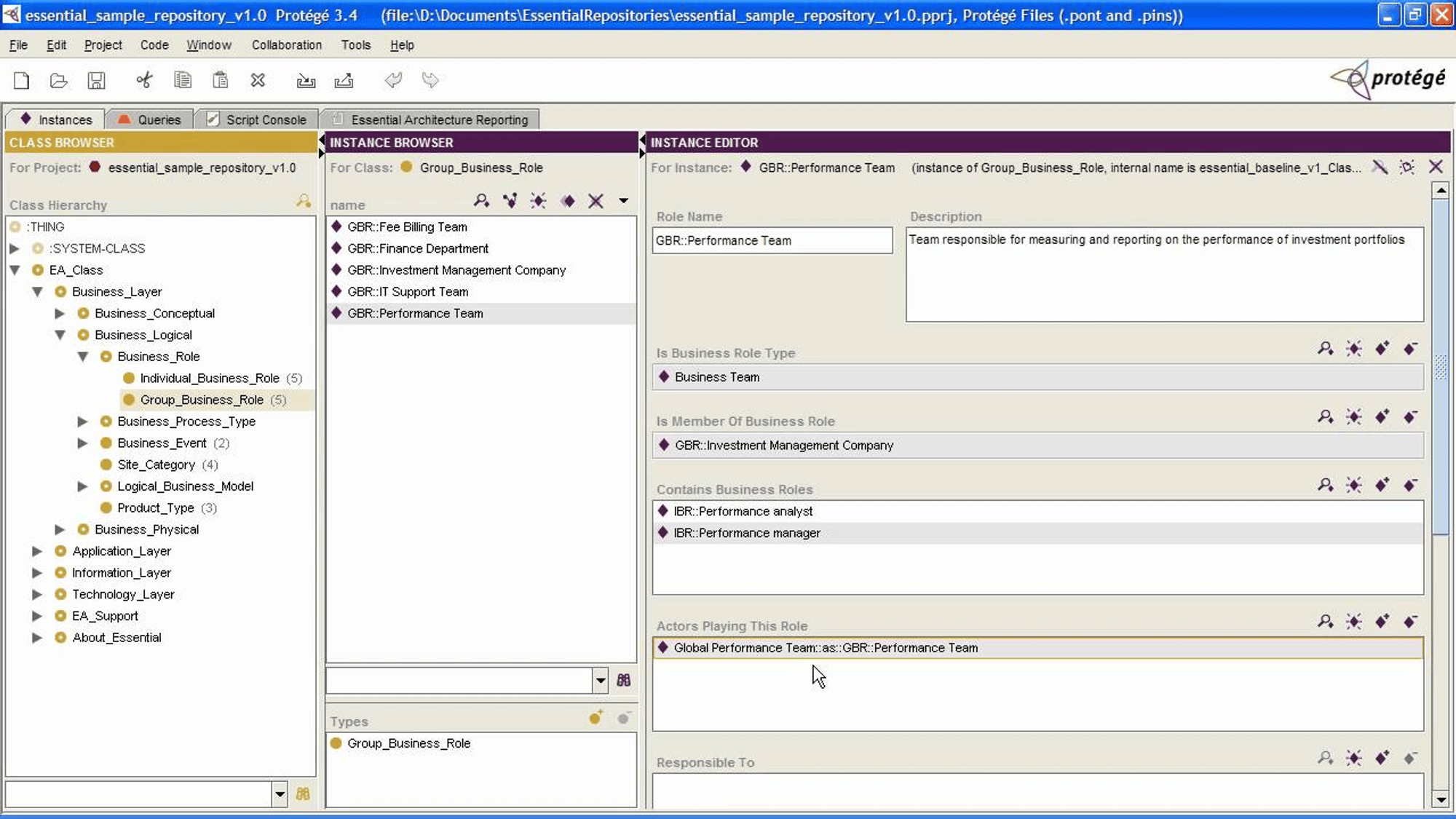 |
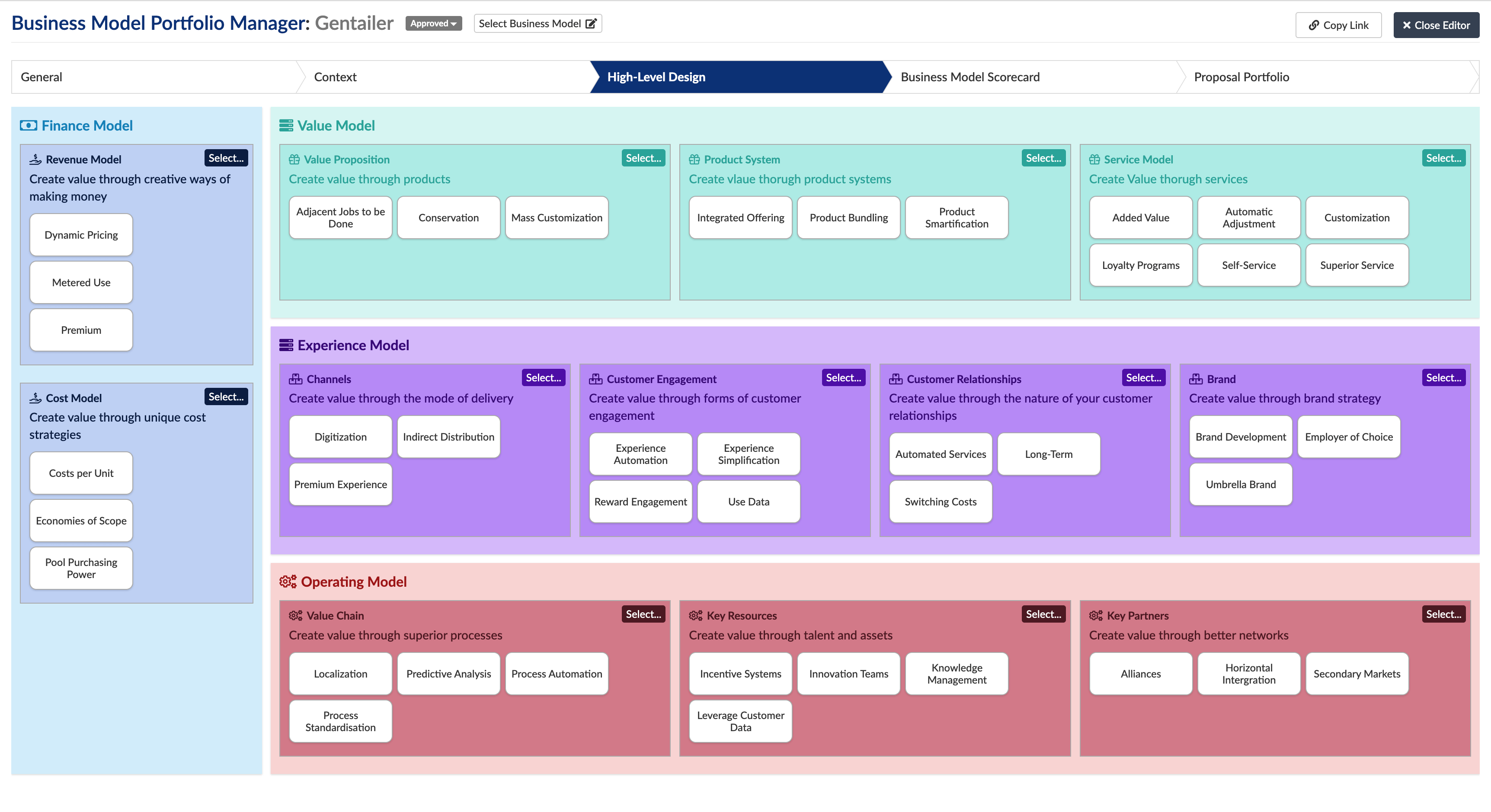 |
|
|---|---|---|
| Fig.2: Protégé Data Editor of the Open-Source Version of the Essential Project. | Fig. 3: Everyone´s Essential Business Model Portfolio Manager Editor. |
For Whom?
The Essential Project is beneficial for a wide range of roles within a company. With fully configurable portals, relevant visualizations and data editors can be provided to various roles or individuals, making the tool easier to use. Instead of navigating through multiple views, users can quickly and easily access the information that is most relevant to them.
Roles that can benefit from the Essential Project include, among others:
-
CIO/CXO
-
Enterprise Architect
-
Business Architect
-
Application Architect
-
Technology Architect
-
Information Architect
-
Solution Architect
-
Business Analyst
-
Business Process Manager
-
Project Manager
-
Risk Manager
An overview of the use cases of the Essential Project for various roles can be found here.
Meta Model
The Essential Project comes with its own meta-model, which is based on the experience of EAS’s enterprise architecture consulting practice. The goal is to provide a meta-model that can easily map to industry standards such as TOGAF, FEAF, MODA, etc.
The EAS meta-model is based on the four architecture layers common in EAM: Business, Application, Information, and Technology. It was developed to provide a comprehensive yet accessible structure for modeling and managing enterprise architecture.
In addition to these architecture layers, EAS offers a range of supporting meta-model concepts. These concepts enable the design of management and governance processes that leverage the data captured in the core meta-model. By integrating these concepts, organizations can achieve effective management and governance of their enterprise architecture, thereby better supporting their business objectives.
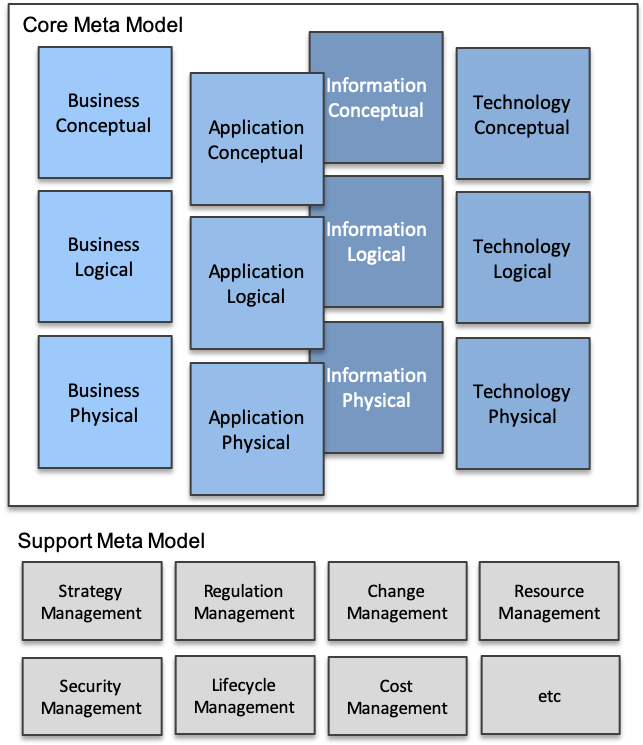 |
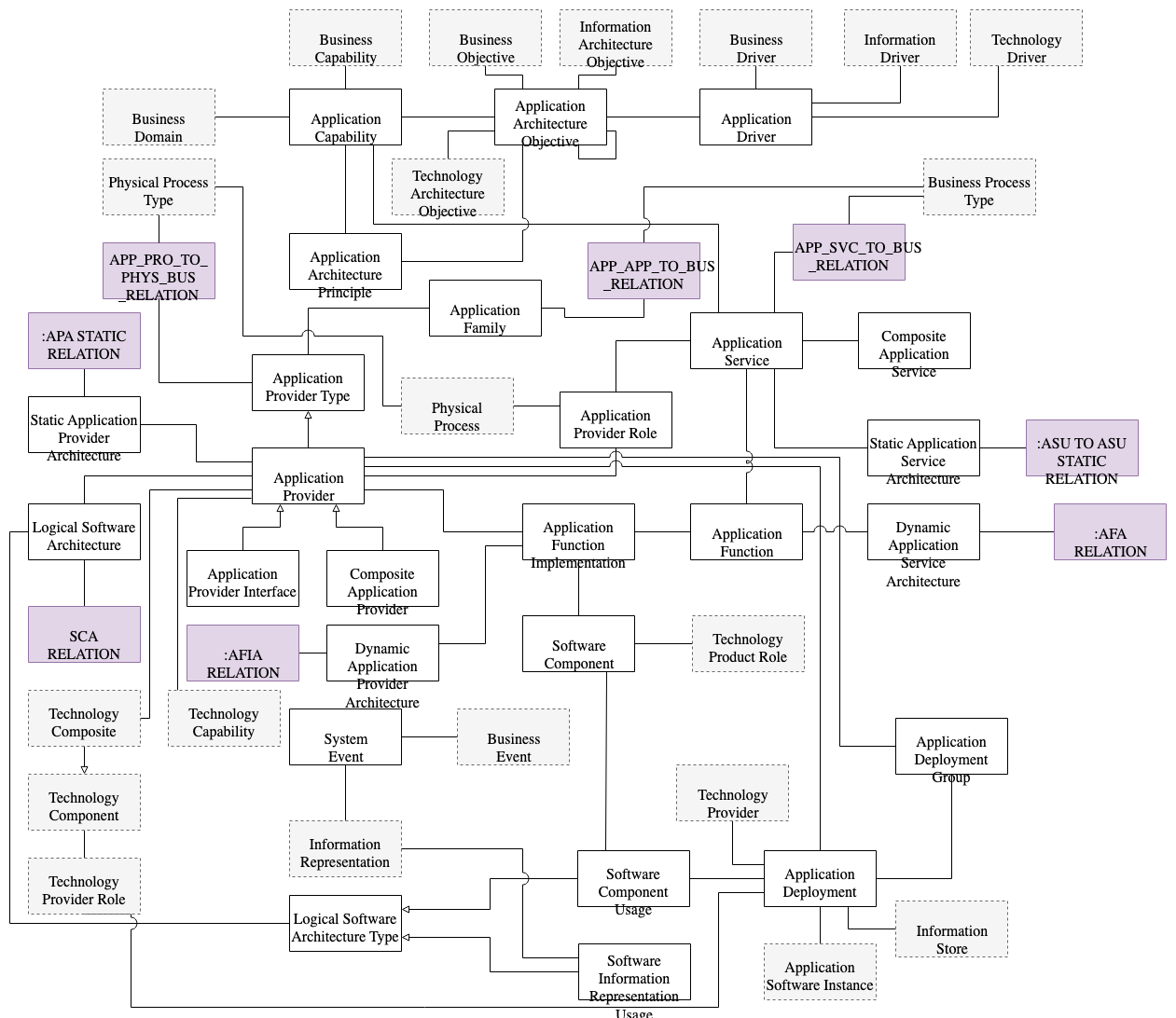 |
|
|---|---|---|
| Fig. 4: The Essential Project Meta-Model. | Fig. 5: Classes and Relationships of the Application Layer. |
Überblick Feature Set
The Essential Project offers a comprehensive range of functionalities that enable efficient data capture and visualization.
 |
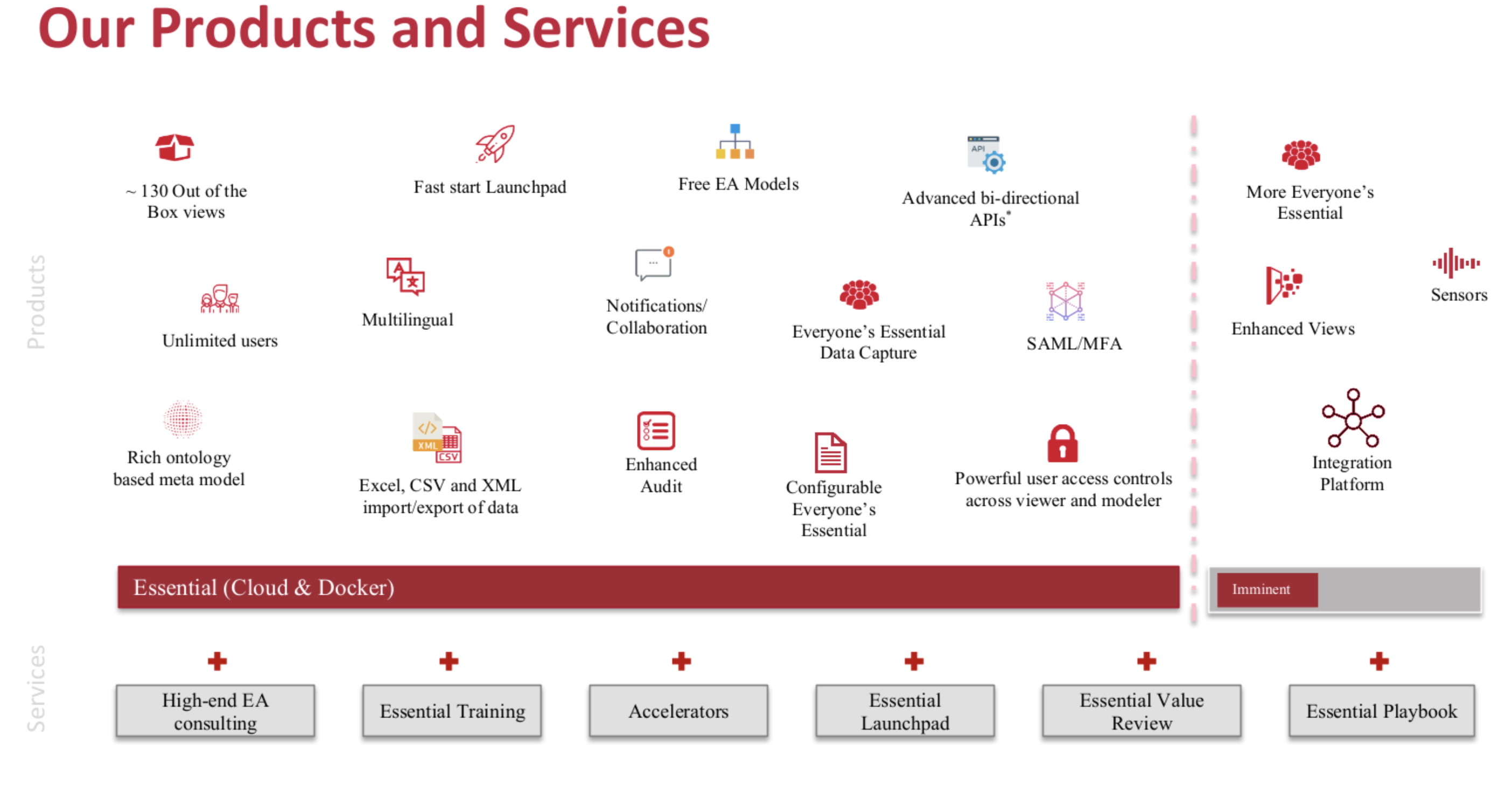 |
|
|---|---|---|
| Fig. 6: The Essential Project Ecosystem. | Fig. 7: Overview of the Essential Project’s Feature Set. |
Data Maintenance:
- Web-based and fully configurable data editors.
- Import utilities support data import from Excel, XML, and CSV.
Visualization of Enterprise Data:
- The Essential Viewer provides access to over 130 pre-built views.
- Creation of custom views using basic XML and XSL formatting.
Security:
- Security Interface.
- SAML Integration.
- MFA Support.
Collaboration:
- Collaboration and notification features.
- Internationalization is supported.
Integration:
- Integration with CMDBs, BPM tools, and PMO tools.
- Bidirectional APIs.
Support Functionalities:
- Playbook.
- Launchpad simplifies usage.
- Free EA models.
Example Visualizations:
 |
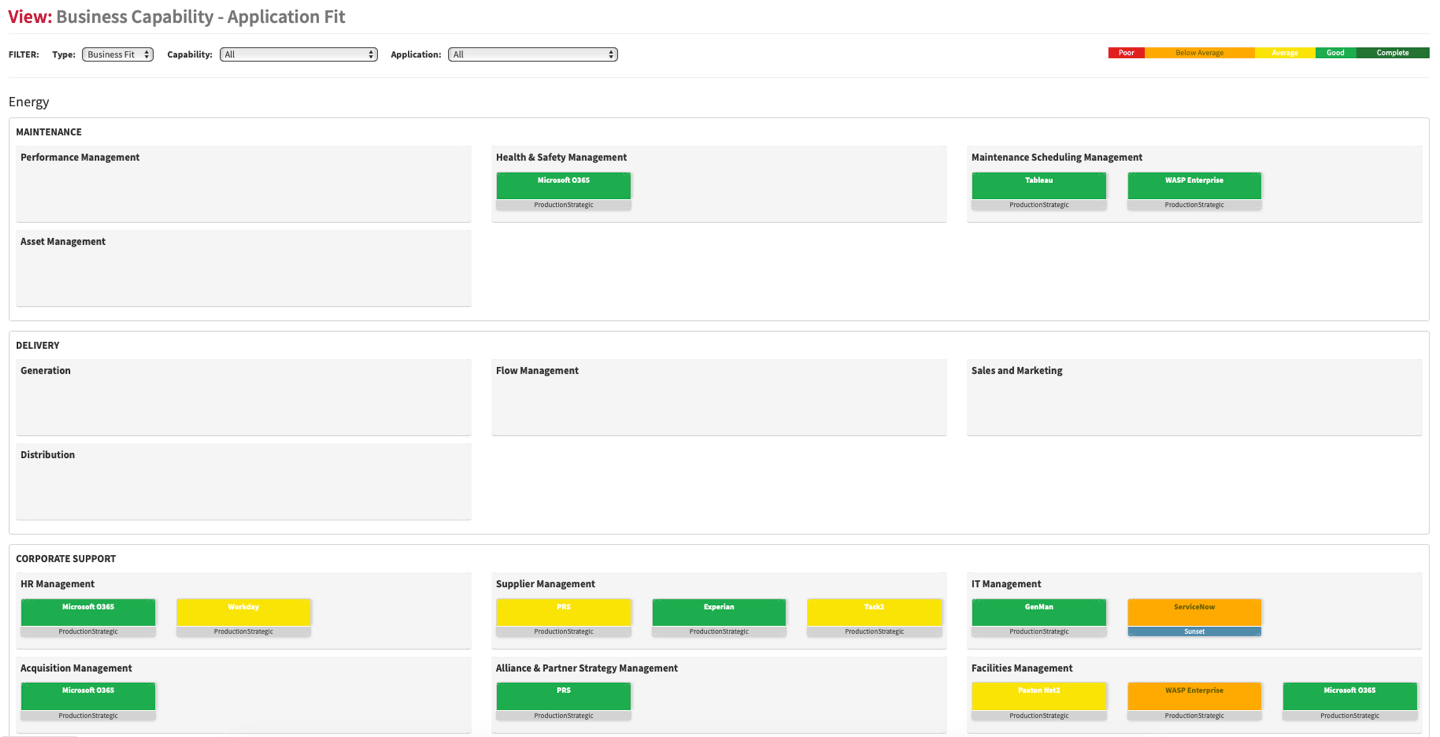 |
|
|---|---|---|
| Fig 8: Application Roadmap Report. | Fig. 9: Application Landscape Report. |
 |
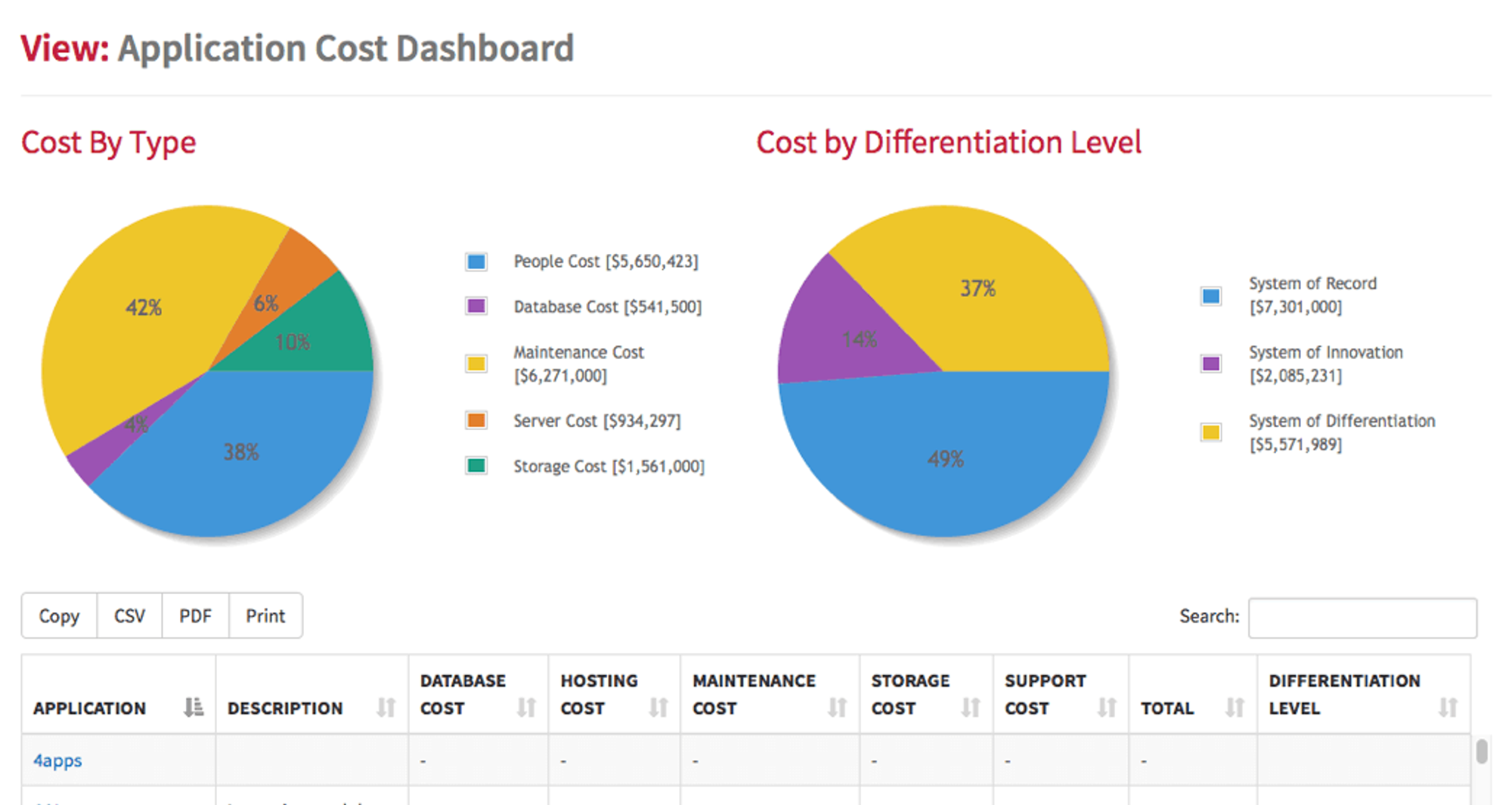 |
|
|---|---|---|
| Fig. 10: Application to Capability Report. | Fig. 11: Application Cost Dashboard. |
Our Recommendation
Whether SaaS or open source, the Essential Project is a compelling alternative to the established solutions on the market.
Are you looking for an enterprise architecture repository? We recommend using the cloud version of the Essential Project and taking advantage of a free 30-day trial. During this time, you can gain valuable insights into your enterprise architecture and determine how well the tool meets your needs. For those seeking an enterprise repository, we are happy to share our experiences and schedule a meeting to discuss further.
We are here to support you throughout this process. We help you define your specific use case and identify the relevant views of your enterprise architecture. Together, we gather the necessary data and customize your repository to your needs.
We start with workshops where we collaboratively identify the initial views that support your use case. We then jointly assess the availability and quality of the required data, as well as the best methods for capturing it.
Our team ensures your repository is operational by setting up the necessary portals, editors, and import services. This process typically takes 2-3 days, depending on the scope and any customizations to standard templates. We are happy to use the remaining time for modeling support, view development, quality assurance, and further adjustments. We are eager to share our experiences from other projects and work with you to determine the best starting point for you—and whether the Essential Tool or another tool fits your requirements.
For more information or questions, please contact us.

Kai Herings
Senior consultant
Optimize alignment between IT and business with expert advice and clear strategies.
